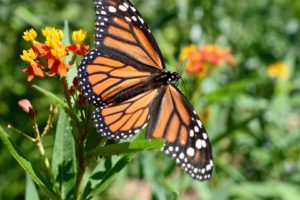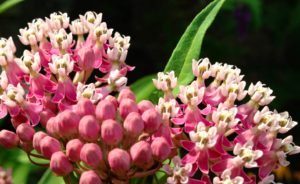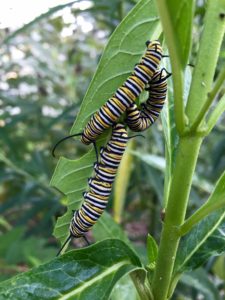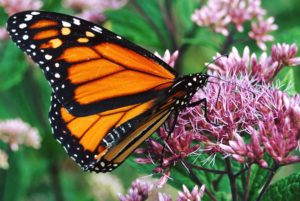Saving the Migrating Monarchs: How to Protect the Endangered Monarch Species From Your Own Home
by Christy Rybka
Earlier this summer, the migratory monarch butterfly was officially declared an endangered species by the International Union for the  Conservation of Nature (IUCN). According to the IUCN, the migratory monarch population has declined between 22% and 72% within the last decade, indicating a concerning trend for the species in the future.
Conservation of Nature (IUCN). According to the IUCN, the migratory monarch population has declined between 22% and 72% within the last decade, indicating a concerning trend for the species in the future.
Although the decline of migratory monarch population can be attributed to several causes, some of these causes include loss of breeding habitat, loss of overwintering habitat, changes in weather patterns, and pesticide use.[1]
However, scientists have not lost hope! As the monarch population declines, efforts to save the monarch butterfly from extinction continue to increase. In 2016, Kentuckians united to initiate the Kentucky Monarch Conservation Plan, which has helped restore monarch habitats and create awareness around the state of Kentucky and beyond. Today, there are several ways that all of us can support efforts to protect the monarch butterfly including:
Planting Milkweed
One of the best ways to support the monarch butterfly is by planting milkweed! Milkweed is the only plant that monarch butterflies will lay their eggs on and the only plant that monarch larvae will eat. Without milkweed, monarchs cannot survive! Some species of milkweed that are native to Kentucky include the Common Milkweed, Swamp Milkweed, and Butterfly Weed.
 Did you know that monarchs only eat when they are caterpillars? Once they become butterflies, they never chew again, instead they will sip nutritious nectar from flowers.
Did you know that monarchs only eat when they are caterpillars? Once they become butterflies, they never chew again, instead they will sip nutritious nectar from flowers.
Decrease Pesticide Use
According to a study conducted by Michigan State University, increase in pesticide use leads to a decrease in monarch populations.[2] Pesticides can harm monarchs directly, if a milkweed plant is contaminated with pesticides, or indirectly by killing milkweed, which the monarchs need to survive. By decreasing pesticide use in our own backyards and gardens, we can help support monarchs by protecting them and the plants they depend on for survival!
Support Your Local Nature Preserves
Even if you do not have a backyard, you can still do your part to protect the monarch butterfly by supporting organizations, nature preserves, and conservancies that are working actively to support the monarch population in your local community.
At Creasey Mahan, we are actively working to protect the monarchs in our community by supporting monarch habitats and protecting native  milkweeds in our gardens and in our Native Grasslands. In fact, we have two gardens that are Certified Monarch Waystations (from MonarchWatch.org).
milkweeds in our gardens and in our Native Grasslands. In fact, we have two gardens that are Certified Monarch Waystations (from MonarchWatch.org).
Other local organizations you can support and learn more about pollinators include the Kentucky Department of Fish and Wildlife Resources, the Kentucky Native Plant Society, and Idlewild Butterfly Farm.
Are you interested in learning more? Stop by the Nature Center at Creasey Mahan to speak with a naturalist, see the milkweed plants in our gardens, and maybe even see a monarch while you visit!
[1] Monarch Butterflies and Milkweeds: Planting Kentucky Native Milkweed Species – Kentucky Native Plant Society (knps.org)
[2] Looking beyond the breeding grounds | MSUToday | Michigan State University


